Mizina/iStock/GettyImages
Cracks and splits occur in baked goods, especially in pies, as a result of moisture issues. The moisture is usually sucked out of the pie too fast, causing the custard-like filling to dry out and separate. This phenomenon happens to cheesecakes most often, despite the water bath they're baked in.
Time and Temperature Issues
The primary cause of a split cheesecake is heat and a longer-than-necessary baking time. The lengthy exposure to the heat is what causes the drying and separation that leads to split cheesecakes. You should actually turn off the oven temperature before the center of the cheesecake is set. As the heat dissipates in the oven, the cooking completes and is finished long before the cheesecake can dry out.
The Problem of Overbeating
A lesser-known cause of splitting cheesecakes is overbeating. It is tempting to want to beat the cheesecake batter beyond the moment it reaches smoothness. However, doing so incorporates air into the batter that get trapped until the cheesecake settles in the oven. During the baking process, the air is released, causing the top to split. To prevent this phenomenon, only beat the cheesecake batter until it is smooth or for the time suggested in the recipe.
More Solutions
To help reduce the effects of the heat on the cheesecake, open the oven door slightly to help the heat to dissipate as the oven cools. You can help solve the overbeating problem by letting the cream cheese come to room temperature before incorporating it into the cheesecake. When beating the batter, use the low speed on your mixer or food processor to prevent the excess air from getting into the batter.
Cover Up
Sometimes, you may get a split cheesecake after following the recipe perfectly. Starting over is often not an option, so you must make do with the split dessert. Instead of serving dessert with an apology, take the opportunity to dress up your cheesecake with a cover-up. The most popular cover is sour cream, but a chocolate or fruit sauce will also work. Spread the topping over the crack to fill it and then spread a generous dollop on the rest of the cheesecake. The topping will add a nice flavor to the dessert, while hiding your crack in the most elegant manner.
Related Articles
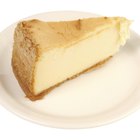
Why Does My Cheesecake Crack?
A Substitute for Meringue
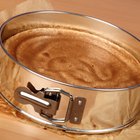
How to Make New York Cheesecake

Brownie Bottom Butterscotch Cheesecake ...

The Cream for My Tiramisu Is Too Watery
How to Make Drizzle Icing From Frosting ...
How to Keep Meringue Pie Topping From ...
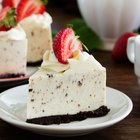
How To Make An Oreo Cheesecake Crust

How to Store Leftover Pancake Batter

How to Make Chocolate Ganache With ...

How to Make Whipped Frosting Without ...

How Long Can Cupcakes Be Stored After ...

How to Fix Grainy Whipped Ganache
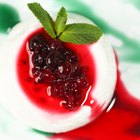
How to Cook Mini Cheesecakes in Ramekins
How Long Can Cupcakes Be Stored After ...

Can I Make Brownies With Confectioner's ...
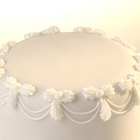
How to Make a White Decorator Icing
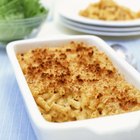
How to Prevent Cheese Separation in ...

Can You Make a Great Tiramisu Without ...
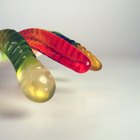
Will Gummy Worms Melt If Baked in ...
References
Writer Bio
Jonita Davis is freelance writer and marketing consultant. Her work has appeared in various print and online publications, including "The LaPorte County Herald Argus" and Work.com. Davis also authored the book, "Michigan City Marinas," which covers the history of the Michigan City Port Authority. Davis holds a bachelor's degree in English from Purdue University.